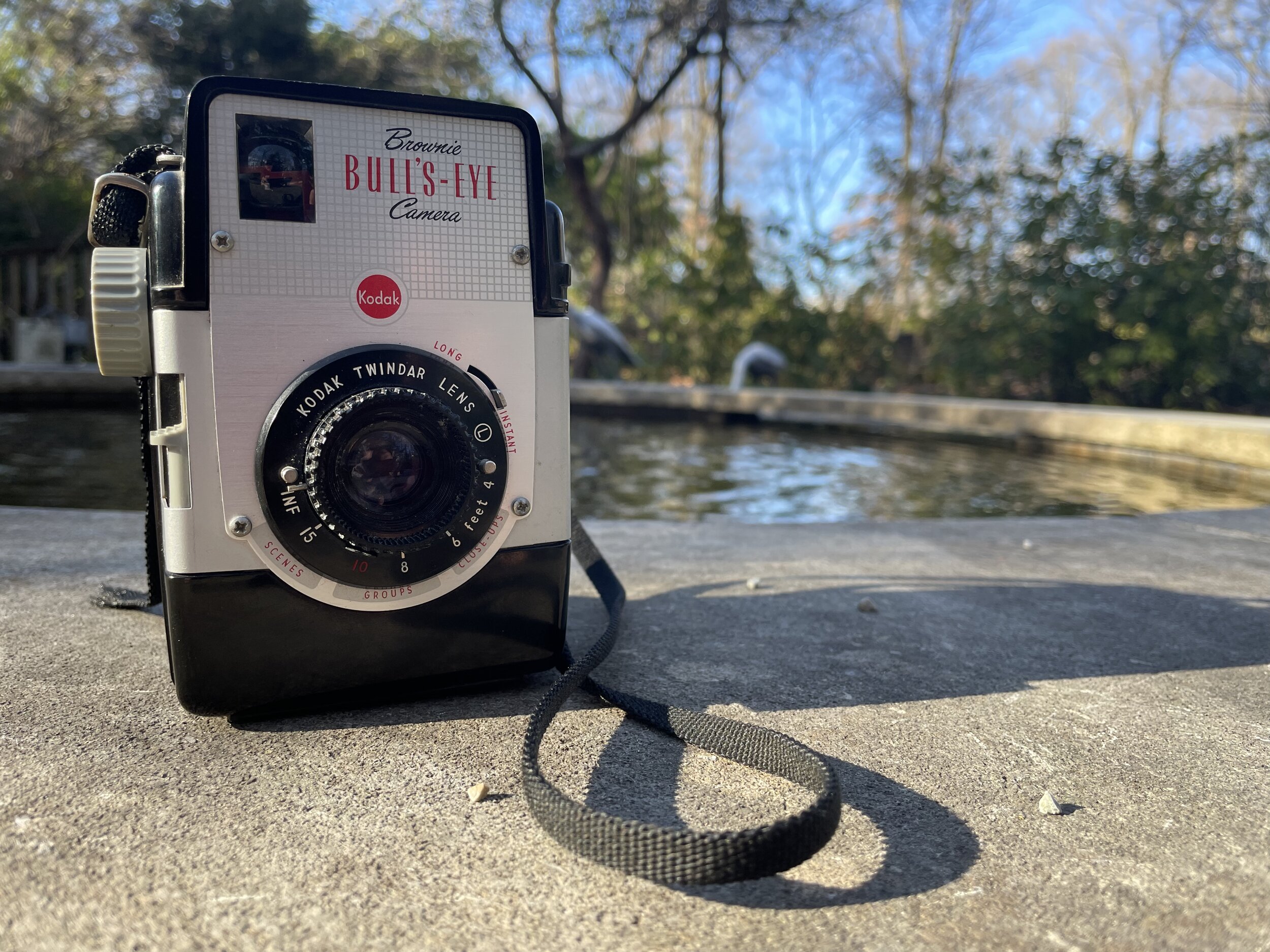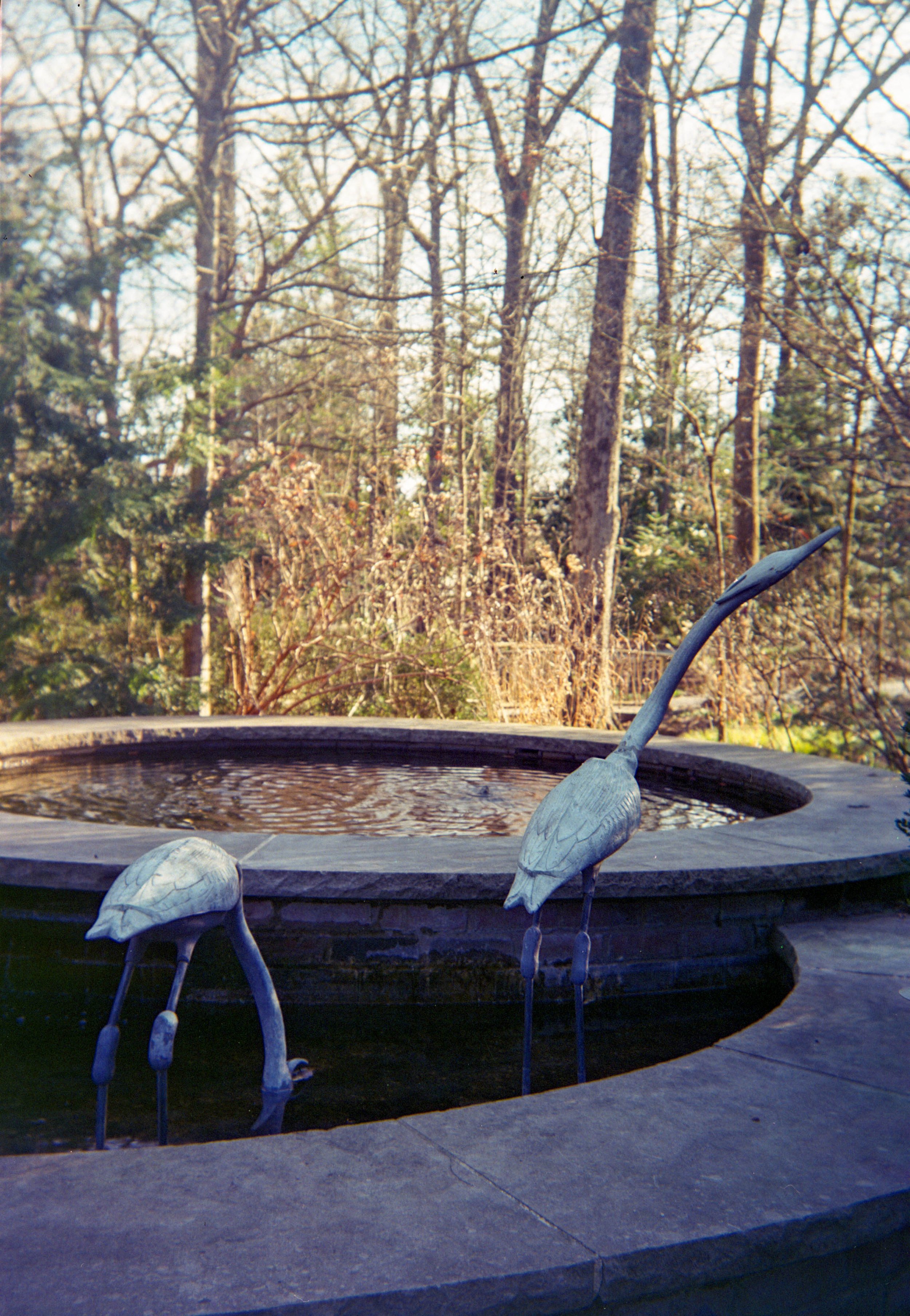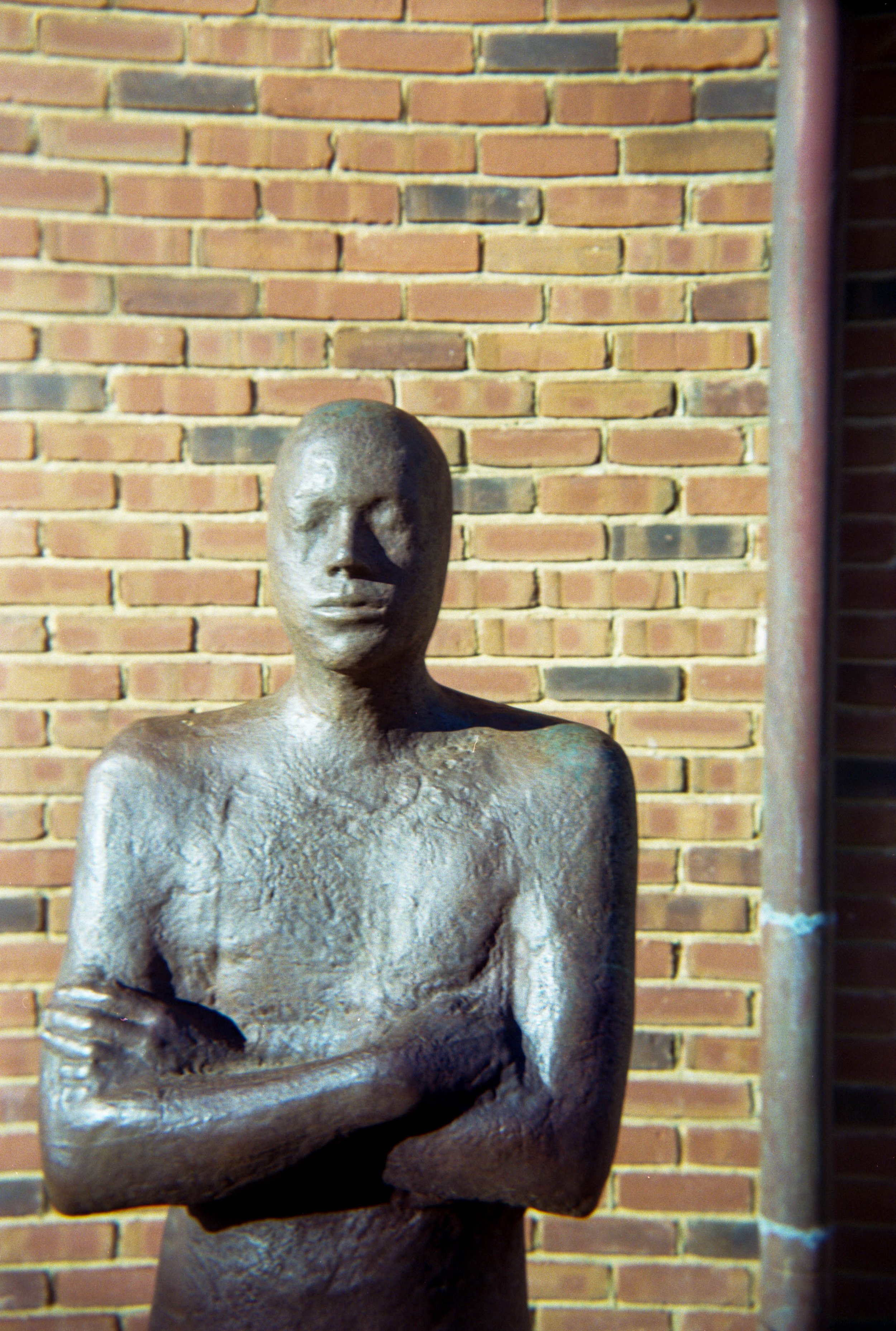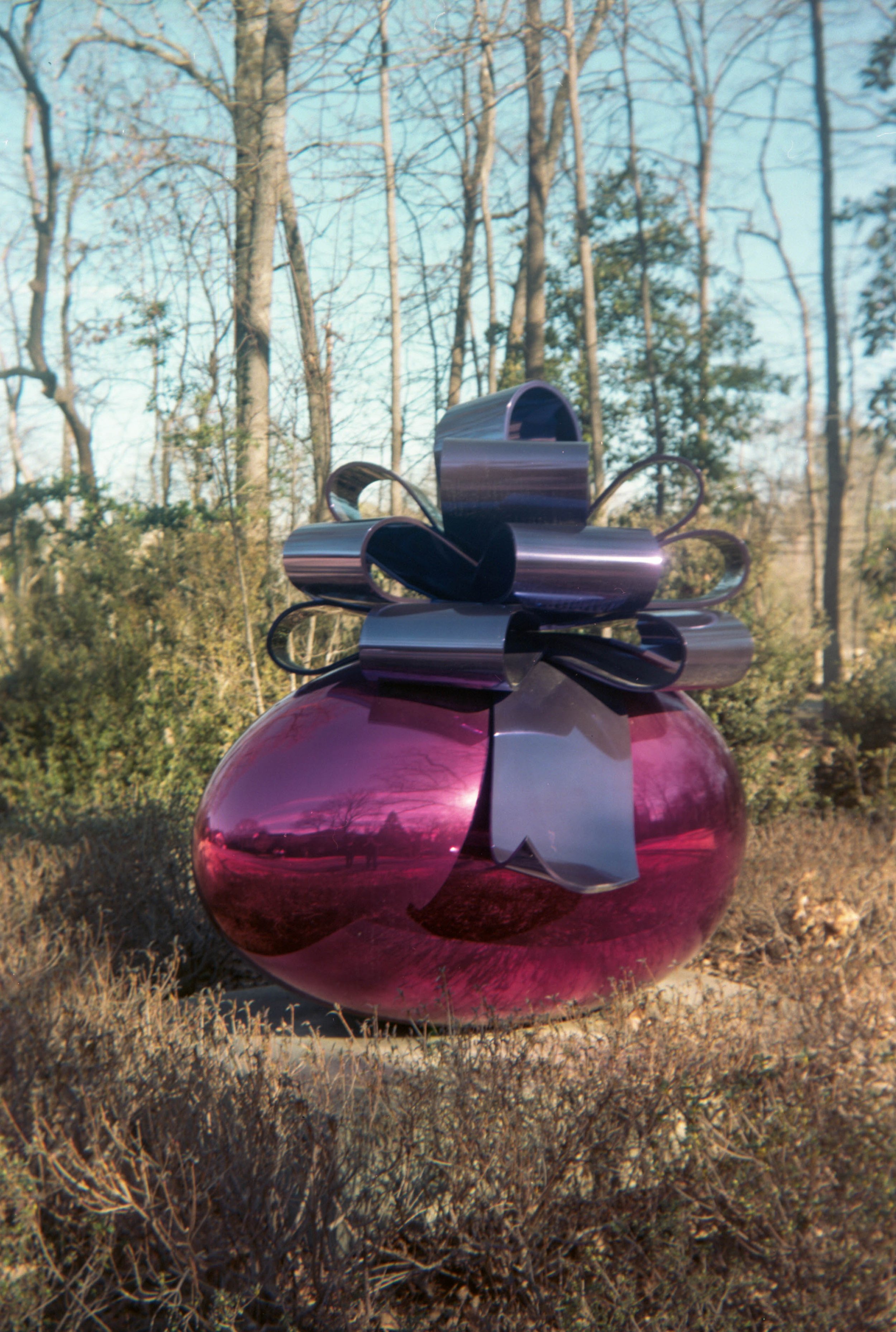I definitely have a new favorite camera. It all started last week when some friends informed me it was International Brownie month. I put some Ektar 100 in my Brownie Hawkeye and went out for a stroll. The shots were sharp, but being test shots made them not really something worth sharing. One of my friends raved about his Brownie Bull’s-Eye, so I snagged one from the ‘bay. Once it arrived, I stuffed a roll of HP5 in it, and went out for another test photo walk. Again, most of the shots were crap, but I got one keeper. The keeper made me want to really explore this camera with a more suitable photographic setting, so my daughter and I packed up some film and cameras and headed to the Dixon Gallery and Gardens – one of my favorite places for photos.
1956 Kodak Brownie Bull’s-Eye Camera
Let me back up here for any of you film folks that are scratching your head at me still shooting a 620 camera. Yes, you can still buy 620 film, it’s just 120 film re-rolled on the 620 spools. It can be done at home with a dark bag and a couple of spare 620 spools. I prepped 2 rolls: portra 160, and Lomography 400. The 400 actually handled the bright sun better than the 160. It seems the 160 was really blown out on some shots, but the Lomography 400 had nice tones and good contrast. This surprised me a bit with the limited photo settings of the Brownie, and the fact that ISO 400 wasn’t really a thing in 1956.
Shooting with the Brownie isn’t very difficult. Once the film is loaded, the camera winds on the right hand side and has this little lightning bolt in the viewfinder that disappears when the shutter is cocked. In the bottom-left corner of the camera is a red window for catching the film count. The downside to the Bull’s-Eye is it only takes 8 6x9cm shots on a roll of film. That’s pricey when a Holga gives you 12 and a Bronica gives you 16. The upside, if you’re willing to roll your own film spools (it’s super-easy) is that you get a really nice 6×9 camera for under fifty bucks as of this writing (2/2022).
The upside to the Bull’s-Eye is its Twindar lens. It allows 4ft – Infinity focus, with a detent to catch the focus at 10ft. This means for most shots, the 10ft mark is perfect. If you’re wanting to get close to your subject, you can set it to 4ft and do some portraits. For those interested in camera history – in the days when focusing was guesswork, quite a few companies put red numbering on the lens and shutter speed dial. If you locked your lens and shutter speed dial to the red marks indicated, and assuming you used the correct speed film for that particular camera, your shots would generally be in good focus, and properly exposed.
Shot at the 10ft mark on the Twindar. Lomography 400.
On the left side of the lens is the only shutter speed control you get. Basically, Long = Bulb mode, Instant = 1/something (from the sound of it 1/60). I am not certain about the aperture. I believe it is probably f/8. It also is good for landscape mode, but it takes time to become accustomed to the sliding shutter button. The trick, I have found, is to hold your breath and pray right before you very gently depress the shutter release. You can’t just smash the button and expect a sharp photo. Any sudden shifting of the camera while exposing will cause blur.
With all it’s interesting Art Deco design, decently sharp Twindar lens, double-exposure prevention, and multiple focusing zones, it’s a really nice bang for the buck! Sure, you need to either trim down your 120 spools or reload them onto 620 spools, but that’s a couple minutes for each roll, and you can spend the day out shooting. It’s a lot of camera for a little up-front cost. If you get a beater, they’re easy to disassemble and clean, and there are plenty of articles out there about it.
If you’re looking for an upgrade to the Holga or the Brownie Hawkeye, try the Bull’s-Eye.
Water fountain – 1956 Kodak Brownie Bull’s-Eye – Kodak Portra 160
Shake will cause blur! Hold your breath and gently press the shutter. Kodak Portra 160
This was taken at the 4ft distance. Lomography 400.
Taken at the 10ft mark. Kodak Portra 160
Mood. Lomography 400. She was shooting my Minolta Himatic, also a great camera!







